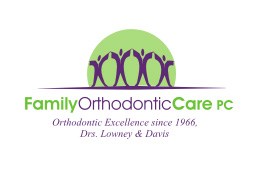Appliance
Anything that is attached to your teeth that moves your teeth or corrects your bite.
Archwire
A wire engaged in orthodontic attachments, affixed to the crowns of two or more teeth and guides the direction of tooth movement. What makes the orthodontic movement.
Orthodontic Bands
A thin metal ring, usually stainless steel, which serves to secure orthodontic attachments to a tooth. The band fits similar to how a ring fits your finger.The assistant will try on a couple different size bands on your teeth until they achieve the correct size. The band is closely adapted to fit the contours of the tooth and then cemented into place.
Bracket
An orthodontic attachment made of metal, ceramic or plastic that holds the archwire against each tooth. The archwire fits into a slot in the bracket. Brackets may be attached directly to each tooth or to a band. Each bracket is silver or clear, and you can choose a color to go around each bracket every time you come in.
Ceramic Brackets
Crystalline, alumina, tooth-shade or clear synthetic sapphire brackets that are aesthetically more attractive than conventional metal attachments. They are clear in color and tooth blended. Most teens and adults choose this option for the upper teeth that are in the smile zone so it is less noticeable. Note: While clear is great, the brackets can stain upon your diet. For example: coffee, tea, red colored pasta may leave a hue of color on the brackets so keep that in mind when choosing this option.
Chain
An elastic chain that is used to hold the archwires onto the brackets. The chain elastic is a ONE solid connecting color, it is usually used to closed space.
Coil Spring
The coil spring fits between brackets and over the arch wire. This is used to either open space where a tooth needs to come in or to make room for an existing tooth to come aligned.
Debanding
The removal of cemented orthodontic brackets or bands. The braces are removed by an assistant and the doctor removes all of the cement.
Elastics (o-rings)
A tiny rubber ring that ties the archwire into the bracket. Found in numerous colors for better appearance.
Fixed Retainer (Upper LBR)
A permanent retainer that is bonded to the back side of the front teeth to keep the teeth from shifting from their new position. This is typically something we have placed if the patient initially started with a space between their front teeth.
Habit Appliance
An appliance designed to deter thumb or finger sucking habits. A habit appliance can also be used if the patient has a tongue thrust.
Headgear
Generic term for extraoral traction (attached around the back side of the head) for growth modification, tooth movement and anchorage.
Impressions
An imprint or mold of the teeth used to design an orthodontic treatment plan. The impressions can be made into different flavors upon the patients request, its squishy like pudding, and is all set up in about 30 seconds or less.
Interceptive treatment
Interceptive treatment, also known as early treatment, is limited orthodontic treatment usually performed between the ages of 6 and 10. This phase of treatment makes future orthodontic treatment faster and less invasive.
Lingual Appliances (Lower Bonded Retainer)
Orthodontic appliance that is fixed to the interior (tongue) side of teeth. It is a thin little bar that is bonded behind the six lower front teeth. It is a great retainer for patients who have great oral hygiene because it is a no brainer. It is in and working all the time, and you don't have to remember to wear it. It does have some food restrictions and must be flossed with a floss threader if not every day, every other day.
Mouthguard
A mouthpiece that is tailored to provide protection to the braces and teeth while the patient is playing a sport. We have stock of mouthguards with and without straps so they can be used with all sports. They are not like the mouthguards bought at the store because you do not melt and mold them. They fit one way and fit best over braces. We supply the first one here at our office for FREE with treatment, and replacements are $10.00.
Palatal Expander
Attached to the upper molars through bonding or by cemented bands, the palatal expander is used to create a wider space in the upper jaw. This appliance sits at the roof of the patients mouth and is turned upon doctors request by a parent/guardian.
Radiograph
A permanent image, typically on film, produced by ionizing radiation. Sometimes called an X-ray after the most common source of image-producing radiation.
Retainer
Any orthodontic appliance, fixed or removable, used to maintain the position of the teeth following corrective treatment. We have a couple different options of retainers for both the top and lower teeth. Retainers are a lifetime commitment. We NEVER say to stop wearing your retainers, and anyone who tells you different is lying!
Separator (spacer)
Separators are small blue/purple elastics that fit snugly between certain teeth to move them slightly so bands can be placed around them later. They are not painful, they just feel like you have something stuck between your teeth and that is normal. Do not floss, pick them out, or eat anything sticky that could pull them out. If you think they have fallen out let your parent/guardian know so we can see you again to replace them.
Wax
After getting your braces put on, wax is going to be your new best friend! Patients are instructed to break off a small piece of wax and place it over a bracket or poking wire that is causing irritation to the lip or cheek. If you need more wax, you call us! We can mail it to you in the mail or you or your parent/guardian can pick you up more here at the office for FREE. We buy it in bulk so you don't have to.
